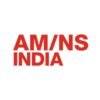Filter interviews by
Al Shafar Steel Engineering Llc Interview Questions and Answers for Freshers
Al Shafar Steel Engineering Llc Interview Experiences for Freshers
1 interview found
Related to a certification or your experience
Top trending discussions






Interview questions from similar companies

I applied via Referral and was interviewed in Dec 2020. There were 3 interview rounds.
Interview Questionnaire
5 Questions
- Q1. Dc drives
- Q2. Plc communication
- Q3. Filed equipment
- Q4. Ac drives
- Q5. Transformers
Interview Preparation Tips

Senior Engineer Interview Questions & Answers
Jindal Steel and Powerposted on 18 May 2020
I applied via Naukri.com and was interviewed in Nov 2019. There were 3 interview rounds.
Interview Questionnaire
8 Questions
- Q1. About your professional & family details
- Q2. Is there any previous experience about coke oven plants & steel industry
- Q3. If you have the previous experience about those plant then they will ask u question regarding those plant systems.
- Q4. Tell me two most Appreciateable job you have done and two mistakes with the findings from that mistake.
- Q5. About PCS7 software knowledge & siemens plc automation related details
- Q6. Field instruments related questions, like control valves, transmitters, analyzers etc.
- Q7. How to calibrate a control valve
- Ans.
Control valve calibration involves adjusting the valve to ensure it operates within specified parameters.
Determine the valve's operating range and desired set points
Use a calibration bench or in-line calibration equipment to adjust the valve's position and response time
Verify the valve's performance using a flow meter or pressure gauge
Document the calibration process and results for future reference
- Q8. Pcs7 server client systems
Interview Preparation Tips
HR round is very general discussion, No Group discussion held.
Overall you have a good interviewing experience if you have a sound technical skills in your field.
Interview has two part
1. Telephonic interview with general details & basic technical question related to that post.
2. On site interview with details discussion & technical & HR discussion.

I applied via Approached by Company and was interviewed before May 2021. There were 3 interview rounds.

(1 Question)
- Q1. All about area related work
(1 Question)
- Q1. Package finalizing and house allotment process
Interview Preparation Tips

I applied via Company Website and was interviewed before Sep 2021. There were 2 interview rounds.

(1 Question)
- Q1. Asked only your job related question
Interview Preparation Tips

I appeared for an interview before Jan 2021.




(3 Questions)
- Q1. What are your salary expectations?
- Q2. Any questions hr team
- Ans. Ple call me
- Q3. Any questions hr team
Diploma
(1 Question)
- Q1. What are your salary expectations?
- Ans.
I expect a competitive salary that reflects my skills, experience, and the industry standards for a Senior Engineer role.
Research industry standards: For example, according to Glassdoor, Senior Engineers in my area typically earn between $100,000 and $130,000.
Consider my experience: With over 8 years in the field and expertise in multiple programming languages, I believe a salary in the upper range is justified.
Factor ...




Interview Preparation Tips

I applied via Company Website and was interviewed before Nov 2018. There were 5 interview rounds.
Interview Questionnaire
2 Questions
- Q1. Interviewer asked questions based on resume contents
- Q2. Just honest reply
Interview Preparation Tips

Interview Questionnaire
1 Question
- Q1. Iron-Carbon Phase diagram, CCT curves, Pearlite,lever rule
Interview Preparation Tips
Experience: It was online test and was aptitude section first. Questions were easy and later there were questions on English grammer and comprehension which would require 10th level knowledge. At last there will be 25 technical questions. Surprisingly, most of them were factual.
Tips: Pick up any aptitude book and practise it to improve your problem solving speed.
Duration: 1 hour 30 minutes
Total Questions: 90
Round: Technical + HR Interview
Experience: I was asked to draw Iron Carbon phase diagram and CCT curves. I was also tested about lever rule and eutectoid composition.
Tips: Coursework would suffice
College Name: IIT Madras

Interview Questionnaire
1 Question
- Q1. Tell me about yourself. Questions regarding Iron-Carbon diagram and CCT curves
Interview Preparation Tips
Experience: Basically there were some aptitude questions which were easy and English grammer(10th level) was asked. About technical aspect, questions were mostly factual.
Tips: For technical, prepare specifically for factual questions from your coursework. For aptitude part, focus on speed of solving problems.
Duration: 1 hour 30 minutes
Total Questions: 90
Round: Technical + HR Interview
Experience: I was asked about myself and extra-curricular activities first followed by some technical questions about iron-carbon phase diagram and lever rule.
Tips: Course work would suffice
College Name: IIT Madras

I applied via Company Website and was interviewed in Jul 2018. There were 5 interview rounds.
Interview Questionnaire
2 Questions
- Q1. One important incident in your carrier where you think you have contributed effectively in your organization
- Ans.
Implemented a new customer feedback system resulting in increased customer satisfaction and retention rates.
Identified the need for a more efficient feedback system
Researched and implemented a new software to collect and analyze customer feedback
Analyzed the data to identify trends and areas for improvement
Implemented changes based on feedback leading to improved customer satisfaction and retention rates
- Q2. What extra zeal you have that You can be hired
- Ans.
I have a strong passion for leadership and a proven track record of motivating teams to achieve success.
Proven track record of successfully leading teams in previous roles
Passionate about developing and mentoring team members
Strong communication and interpersonal skills
Ability to problem-solve and make quick decisions under pressure
Interview Preparation Tips
Experience: Reasoning, English and core subject
Round: Test
Experience: Psychometric
General Tips: Be just yourself, don't lie an inch neither exxagerate things. Coj interviewer understands very quickly your caliber and vague things.
Skills: Communication, Body Language, Analytical Skills
Duration: >3 Months
Al Shafar Steel Engineering Llc Interview FAQs
Tell us how to improve this page.
Interview Questions for Popular Designations
Overall Interview Experience Rating
based on 1 interview experience
Interview Questions from Similar Companies
Al Shafar Steel Engineering Llc Reviews and Ratings
based on 16 reviews
Rating in categories
|
Design Engineer
3
salaries
| ₹6 L/yr - ₹20.1 L/yr |

Tata Steel

JSW Steel

Jindal Steel and Power

ArcelorMittal Nippon Steel
- Home >
- Interviews >
- Al Shafar Steel Engineering Llc Interview Questions >
- Al Shafar Steel Engineering Llc Interview Questions for Fresher












